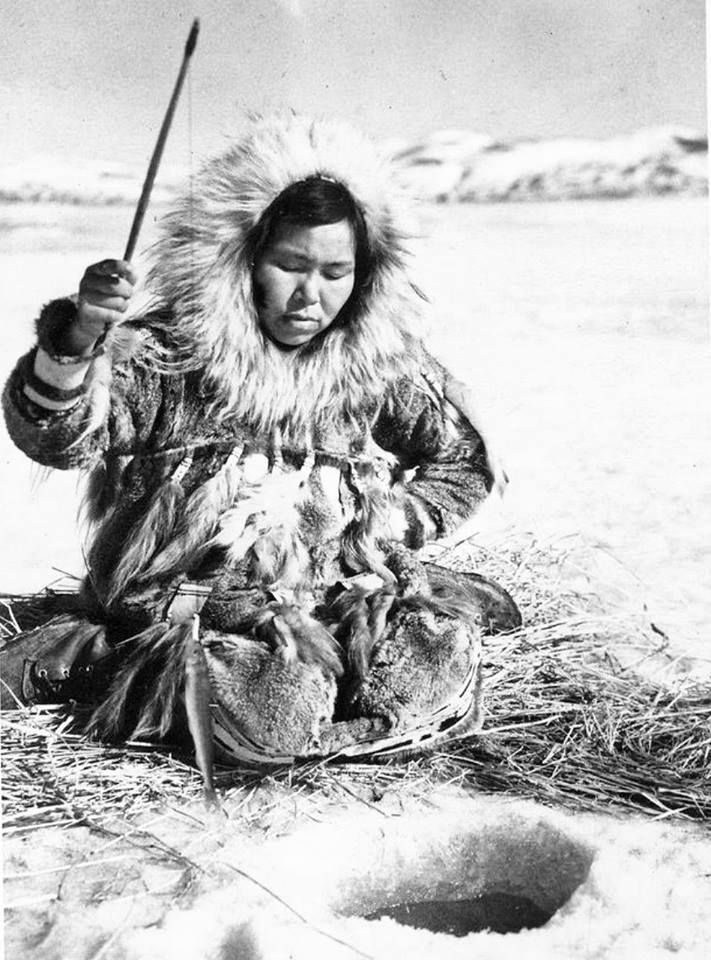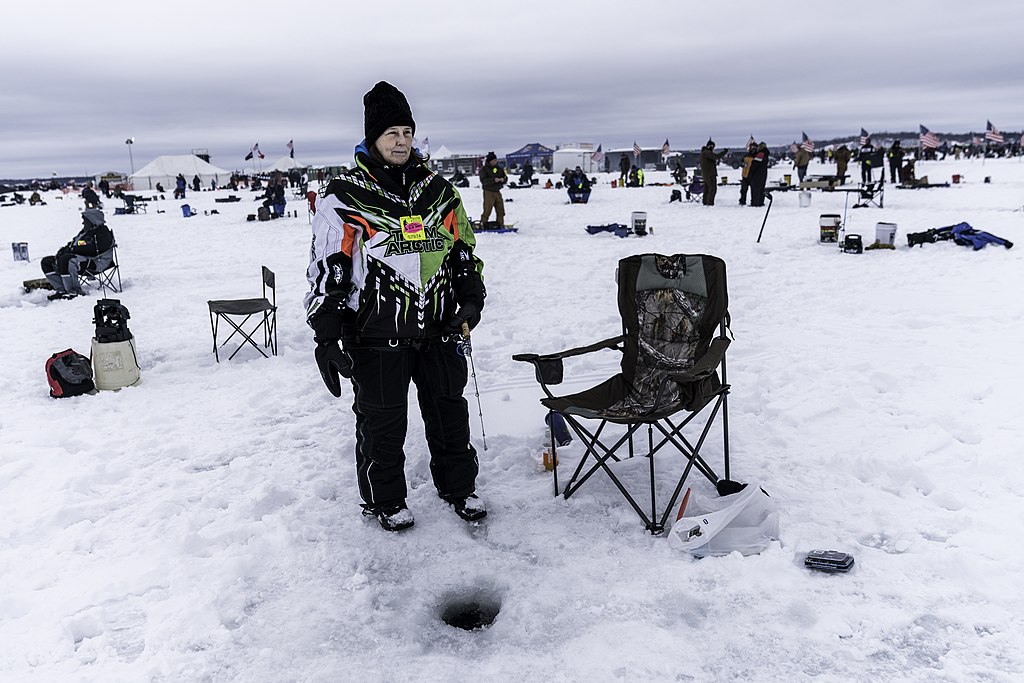Growing up as a child in hot and humid Houston, Texas, ice fishing was something I had only ever seen in cartoons. My main reference point was Walt Disney’s On Ice short from 1935 where Goofy attempts to fish through the ice and hilarity ensues.
But there is a long history of ice fishing across the far north dating back thousands of years.

Alaska Native woman fishing through ice, 19th century
United States and Canada
The best evidence that we currently have for the origins of ice fishing come from the Indigenous Americans of Northern Canada and Alaska. They would have hacked through the solid ice until reaching the flowing water below. Then, they would wait at the top poised with a harpoon or spear until a fish swam by, and they would then spear it. There are Alaska Natives including the Iñupiaq today who hunt in similar ways.
Japan
While ice fishing as it is currently practiced came to Japan around a century ago, it’s possible that the ancient Jomon people ice fished. Archaeological evidence has produced countless speers, fishing hooks, and fishing line that were used for both in-shore and deep sea fishing expeditions. As a Stone Age hunter-gatherer society, they depended on their skills to feed their communities. There is additional archaeological evidence showing pots where surplus fish would have been stored.
Northern Europe
The Indigenous Sámi people of Norway, Sweden, Finland, and Russia are famous as reindeer herders, but many coastal Sámi depended on fishing as part of their diet. Ice fishing was part of that with fishing hooks made of antler–readily available thanks to their domesticated herds. During the Middle Ages, there were Sea Sámi (sjøsamene) who were seen as distinct from the Mountain Sámi (innlandssamene) but over time, the fisherman returned to primarily be herders.

Sámi fishermen, c.1930
Will you be ice fishing this winter? Let us know!

A participant in a fishing competition at Gull Lake in Minnesota, USA, 2020
